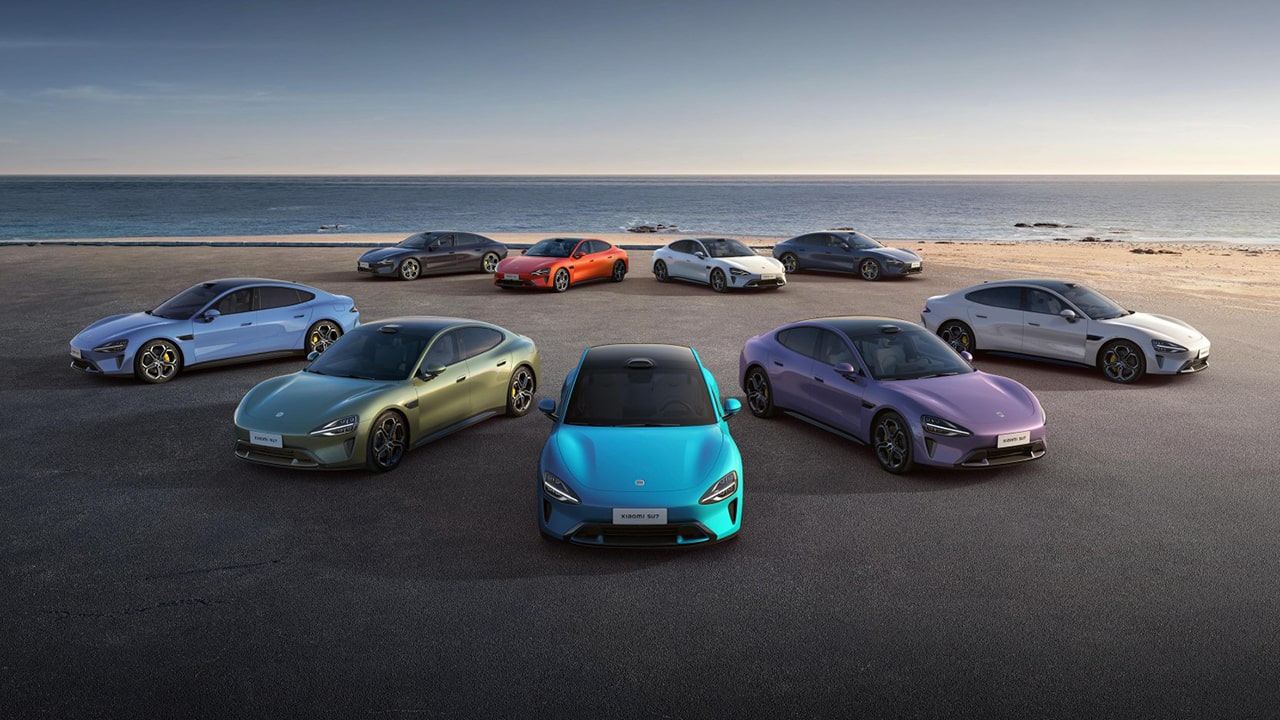Late on March 29, a fatal crash involving a Xiaomi SU7 took place on an expressway in Anhui, leaving three people dead. The incident quickly gained national attention.
By April 1, Xiaomi founder and CEO Lei Jun had taken to Weibo, saying the company would continue cooperating with the police, monitor developments closely, and do everything it could to address the concerns of the victims’ families and the wider public.
The crash triggered a steep drop in Xiaomi’s stock price and sparked a broader debate over the safety of its vehicles and smart driving systems. International media coverage followed, focusing heavily on the severity of the accident.
Just weeks earlier, Xiaomi had announced plans to launch its vehicles overseas by 2027. Now, that ambition is under fresh scrutiny. Overseas outlets have zeroed in on unverified reports that the car doors may have jammed and that a battery explosion occurred—details that, if left unaddressed, could heighten concerns not just around Xiaomi, but around Chinese new energy vehicle (NEV) brands as a whole.
In today’s competitive global automotive market, the “Made in China” label is facing a new stress test. In emerging markets such as Southeast Asia and the Middle East, consumers often have little patience for safety lapses. In mature markets like Europe and the US, brand credibility and long-term tech performance matter just as much—if not more.
Chinese NEV exports are nothing new. Established players like BYD, MG, and Geely are already on the road overseas, joined by newer names like Xpeng Motors, Li Auto, and Neta. But high-profile incidents like this risk reinforcing long-standing concerns, potentially creating new headwinds for global expansion. It also raises the stakes for transparent communication and safety education. Some automakers, like Zeekr, have already begun showing users how to manually override electric door locks in emergencies.
One key debate sparked by the crash centers on smart driving: how much responsibility does driving assistance technology bear when tragedy strikes?
Xiaomi said the vehicle was in navigate-on-autopilot (NOA) mode, traveling at 116 kilometers per hour. The system detected an obstacle and began to slow down. One second later, NOA disengaged, handing control back to the driver. The crash occurred within the next one to two seconds.
Xiaomi had previously highlighted the SU7’s 16 standard safety features, including automatic emergency braking (AEB). That claim has prompted further questions: was AEB active at the time of the crash? In response, Xiaomi clarified that the standard SU7 includes forward collision warning (FCW) and AEB, designed to detect vehicles, pedestrians, and two-wheelers. The AEB system operates at speeds between 8–135 km/h, but like others in the industry, it doesn’t respond to cones, water barriers, animals, or rocks. That limitation underscores a broader disconnect between what users expect and what current AEB systems can actually do.
Smart driving is now a key differentiator for many brands, and its adoption is growing fast. Between January and November 2024, 1.75 million NOA systems were installed as standard in passenger cars in China, according to the Gasgoo Research Institute.
As Chinese automakers move beyond domestic borders, their smart driving solution providers are following suit—sometimes in step, sometimes on their own. Markets with more permissive regulatory environments, like the Middle East, offer attractive testing grounds. But in places like Europe, stringent regulations still pose challenges—from tech specs and data security to road testing and legal liability. Even Tesla’s “Full Self-Driving” (FSD) system hasn’t been widely approved there. In that context, the Xiaomi crash may prompt even deeper scrutiny of China’s smart driving technologies and stall overseas deployment.
China’s carmakers have made enormous strides in smart mobility at home. But exporting those innovations brings a new set of hurdles—chiefly, whether they are safe, reliable, and legally viable in other markets.
This isn’t just Xiaomi’s problem. It’s an inflection point for the entire sector, which is now juggling rapid innovation, cost pressures, and a push for global growth. Whatever the platform—mechanical or digital—one principle should remain constant: safety and human utility must come first.
KrASIA Connection features translated and adapted content that was originally published by 36Kr. This article was written by Chang Weiqian and Shi Yi for 36Kr.

